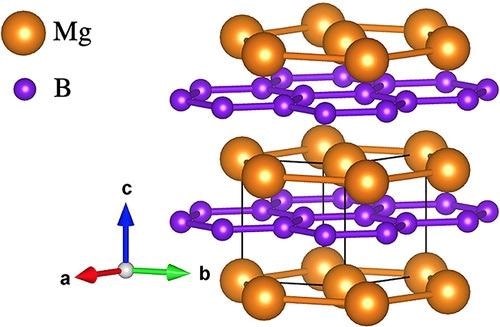 In an article recently published in the Journal of Applied Physics, researchers investigated the influence of strain and pressure on the superconductivity and electron-phonon coupling in magnesium diboride (MgB2). They also discussed the corresponding theoretical approaches and the future of nanostructure design.
In an article recently published in the Journal of Applied Physics, researchers investigated the influence of strain and pressure on the superconductivity and electron-phonon coupling in magnesium diboride (MgB2). They also discussed the corresponding theoretical approaches and the future of nanostructure design.
Background
The discovery of MgB2 as a high-temperature superconductor with a superconducting transition temperature (Tc) = 39 K led to a flurry of experimental and theoretical studies on the compound's various properties. Understanding superconductivity requires knowledge of both the phonon and electrical band structures. Inelastic X-ray scattering measurements of phonon band structure reveal Kohn anomalies. The depths of the Kohn anomalies can be directly linked to the superconducting transition temperature, according to theoretical investigations.
More research is needed, however, to compare approaches for predicting Tc based on the Kohn anomaly strength to estimate the electron-phonon coupling (EPC). The impact of positive hydrostatic pressure suppresses Tc in MgB2. Anisotropic strain's effect on MgB2 superconductivity has also been studied experimentally and theoretically. The Migdal–Éliashberg formalism of superconductivity is known to perform well in calculating the transition of superconductivity in MgB2, in both anisotropic and isotropic approximations, under ambient circumstances.
 About the Study
About the Study
In this study, the authors investigated the effect of hydrostatic pressure, strain, and anisotropic tension on the Tc of MgB2 by using a variety of theoretical approaches. This was accomplished by looking at Kohn anomalies in phonon dispersions alone, as well as by calculating the electron-phonon coupling explicitly. An alternative method was offered via co-deposition using ternary diborides that thermodynamically avoided mixing with MgB2. This method encouraged columnar growth, which caused a strain in all directions.
The researchers compared alternative methods for predicting the Tc of MgB2 under hydrostatic pressure, as well as anisotropic stress and strain. On the optical E2g branch, the first method was based on the pressure-derived evolution of the Kohn anomaly and phonon dispersions. The discrepancies in the detected Kohn anomalies along Γ–q (q = K, M, H, L) across the procedures were quantified. Phonons obtained from both finite displacements and linear response methods were compared. The Migdal–Éliashberg formalism was used to calculate EPC as a function of pressure. Tc was calculated by using both isotropic and anisotropic approximations.
The team utilized two approaches to determine electronic and phonon characteristics in MgB2 from first-principles computations. Two phonon-based finite displacement and linear response approaches were used to characterize the response of Kohn anomaly in the optical E2g branch to the in-plane stretching modes of the B–B bond. The Kohn anomaly approach calculated Tc by utilizing finite displacements at ambient pressure when averaged across all directions. A 5 x 5 (a, c) grid was used to investigate the lattice parameter space around the MB2 (M = V, Ti, Hf, Zr, Y) candidates.
Image 1: The effect of strain and pressure on the electron-phonon coupling and superconductivity in MgB2—Benchmark of theoretical methodologies and outlook for nanostructure design. Image Credit: Gorodenkoff/Shutterstock.com
Image 2: The hexagonal unit cell of MgB2. Each unit cell consists of one magnesium atom (orange) and two boron atoms (purple). Image Credit: Johansson, E et al., Journal of Applied Physics
*Original article by Surbhi Jain and reviewed by Susha Cheriyedath, M.Sc. Published in azom.com from Journal of Applied Physics.


